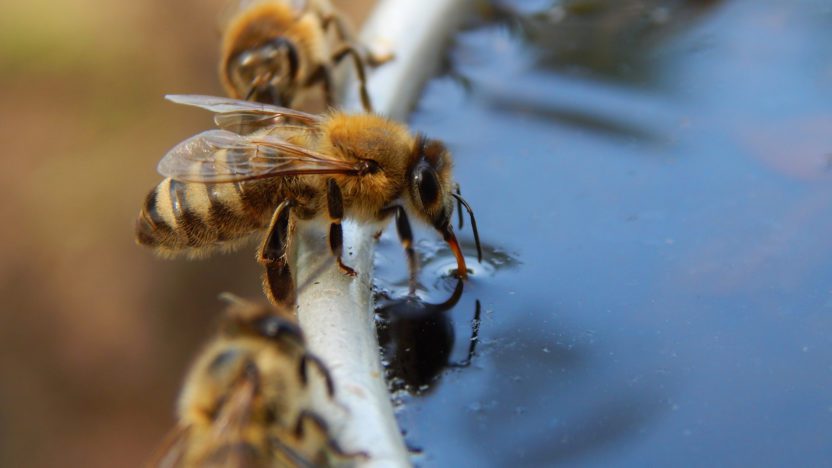Build Some Buzz: How To Create a Bee Sanctuary in Your Garden This Summer
Thank you, gardeners, and all of your plants that delight us with colorful blooms and benefit the world with all that clean oxygen they produce!
Want to boost your garden’s gifts further? The simple practice of nurturing a pollinator-friendly garden (hello, bees!) can go a long way in stewarding the land for the next generation. And beyond that—a bevy of bees will help your garden thrive. Pollination ensures your garden receives the diversified plant-to-plant genetic exchange it needs.
And the bees need you, too—now more than ever. The latest reports from the Center for Biological Diversity show that our pollinators are in big trouble globally. An estimated 1 in 6 bee species is regionally extinct, while more than 40% of the remaining bee species are vulnerable to extinction.
So if you’re looking for something impactful you can do as a gardener, consider creating a bee sanctuary. We’ve put together this little guide of everything you’ll need to know to create the ultimate bee haven in your garden this season.
Choose bee-friendly plants

(Getty Images)
The first step in transforming your garden into a bee sanctuary is to choose pollinator-friendly plants.
“Plants in the aster, mustard, legume, and rose families can feed honey bees,” says gardener and author Charlotte Ekker Wiggins. “Bees also get pollen and nectar from fruit and nut trees, most herbs, and some vegetables.”
Other garden favorites for bees include bee balm, echinacea, lavender, sunflowers, calendula, zinnias, and alyssum.
And culinary herbs like sage, thyme, borage, chives, dill, basil, oregano, rosemary, and mint also work well.
When in doubt, focus on planting pollinator-loving native plants, which your local bee population will easily find and recognize.
Plant early and late bloomers

(Getty Images)
You can also ensure an ample supply of food for the bees by incorporating plants that produce pollen throughout the growing season.
“Focus on things that bloom very early in spring and late in fall, as these are times when bees need the extra nectar and pollen,” says Jodie Kieliszewski of Bee Lovely Botanicals. “Plant buckwheat at the end of the season in your garden. It provides late-season nectar and pollen and is green manure for your garden.”
If you have a vegetable garden, let your broccoli and cauliflower go to seed at the end of the year.
As for early bloomers, consider planting colorful spring flowers like lilac and peonies.
Provide a water source

(Getty Images)
Like most creatures, bees benefit from having a nearby water source. So if you happen to add one to your garden, it will be one more reason—besides all the delicious plants—for them to buzz by frequently.
“Use a shallow dish to provide bees with a water source,” suggests naturalist writer Haeley Giambalvo, of Native Backyards. “Fill a saucer from a terra-cotta pot with water, and add rocks to give bees a place to perch while they take a drink.”
Another good reason to add a bee-friendly water source to your garden: It will keep them from seeking out water (and sometimes drowning) in a nearby swimming pool.
Prune thoughtfully

(Getty Images)
Support your new pollinator friends by changing how you prune plants.
Although you might wish to rapidly deadhead any drooping flowers, keep in mind that the bees might still be feeding on them. So put down the pruning shears to let your flower heads stay intact for as long as the bees seem interested.
And consider keeping a few seed-bearing flower heads at the end of the growing season for the birds while you are at it.
Avoid pesticides

(Getty Images)
Harsh chemical fertilizers and pesticides won’t just kill the healthy bacteria in your soil (and pollute the waterways)—they’re also incredibly harmful to bees.
“Bees have been on the decline in recent years because of commercial overuse of pesticides, which directly affect bee survival,” says gardener and homesteader Ashley Christian, of Homestead Sweet Home. “You can positively impact bee health by choosing organic gardening and lawn care methods.”
If you follow the steps above, we promise you’ll be rewarded with a garden that will have everybody buzzing.
For this and similar articles, please visit Realtor.com

Leave a Reply
Want to join the discussion?Feel free to contribute!